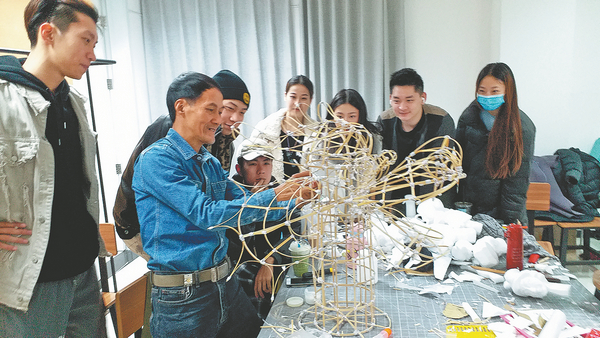Master of puppets
By Yang Feiyue | China Daily | Updated: 2023-06-01 07:29

"Every stroke of the knife needs to be slow and precise, as it is an art of meticulous reduction. If one eye is carved crooked, the entire work is ruined," he says.
In 1978, Lin signed himself up for a puppetry program at a local art school, where he not only continued to hone his skills systematically, but also learned about performance of the art.
"It has gone a long way toward fueling my passion for making puppets, because I was able to better understand the characters in those shows," he says.
"Wood is lifeless, but we must imbue the puppets we carve with vitality and embody the characters in the play," Lin says, adding that people in his trade must also have a deep understanding of the characters' personalities before they can apply their expertise and give the puppets the necessary vividness and realism.
Speaking from his own experiences, Lin says he will give full play to his own imagination based on the scripts and come up with a clay prototype.
Adjustments will be made according to feedback from scriptwriters and directors, before the wood sculpting begins.
After completing the basic form of the puppet, a mechanical mechanism is installed.
For example, the puppet's eyes can be made to rotate and its mouth will open and close.
Makeup will then be applied, with eyebrows and eyes carefully outlined.
"Only then can it appear natural, lively and animated," Lin says.
As a puppet head sculptor, Lin has not only inherited the traditional craftsmanship, but also constantly innovates to meet the aesthetic needs of modern audiences.
For example, when he was asked to create a puppet character of the Italian explorer and merchant Marco Polo, who lived during the 13th and 14th centuries, for a concert at the National Centre for the Performing Arts in 2008, he applied a mixture of granular adhesive material to attach a bushy beard to the puppet's chin.
"Traditional puppets usually only have soft hair, which didn't quite match the image of a Westerner," he explains.
Over the years, he has often walked into the theaters to observe the audience's reactions to different puppets, in order to keep track of the subtle changes of public taste for the traditional show.
Lin has also applied a spray gun in the painting process.
In the past, artists had to carry out the process more than a dozen times to paint the puppets with mineral pigments.
"Now, we can just use a brush to lay the foundation and use a spray gun to apply paint, allowing it to dry faster," he says.
"The colors are brighter, smoother and more delicate than in the past, and they are also more in line with modern stage aesthetics."
As he is about to retire, Lin says he hopes that more young people will join the theater to help carry forward the traditional craft and breathe new life into it.
"Each puppet is like a living being to me," Lin says.
"The change of their facial features reflects different personalities, which makes the carving process a dialogue with life itself."
Contact the writer at yangfeiyue@chinadaily.com.cn
























